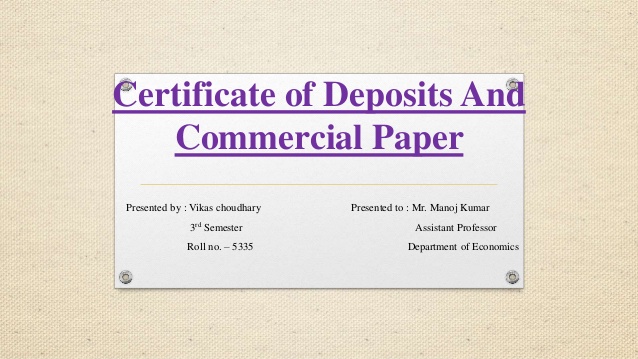Contents
To better understand the concept of financial leverage, it is essential to study different examples. For example, an email marketing service for small businesses wants to calculate its interest coverage ratio. It records earnings before interest and tax of $64,000 and interest expense of $20,000. Mathematically, the debt-to-capital ratio is equal to the total debt divided by the total capital. “Total Liabilities” refers to the full debt of the borrowing company.

With leverage, they can drastically increase their purchasing power and potentially invest in more companies at one time using smaller amounts of cash and larger amounts of debt. Therefore, operating leverage depicts how a firm can use operating costs to cause changes to sales, which increases its profitability. It shows how sales change as a result of changes in fixed operating income.
What Is Financial Leverage, and Why Is It Important?
Here, the percentage increase in the number of units sold is 2.5 times that of the percentage increase in advertising expenses. Overall, a firm should always strive to have a good combination of financial and operating leverage. Borrowing at a lower interest rate and investing the proceeds at a higher interest rate is a form of financial leverage. Given the high financial leverage and the group’s having initially paid above-market prices, many of their loans were underwater. In the spring of 2007 about the dangers of excessive financial leverage.

Calculating the different ways for measuring financial leverage are small business bookkeeping basics that do not require lots of accounting expertise. They include debt-to-equity ratio, debt-to-capital ratio, debt-to-EBITDA ratio, and interest coverage ratio. Financial leverage is the use of a debt to acquire additional assets.
Lenders are less likely to advance additional funds to businesses with a high debt-to-equity ratio. A financial leverage of 2 means that there are two Euros of financial debt for one euro of equity (capital & reserves). Financial debt provides “leverage” by allowing the financing of assets for an amount greater than the contributions of shareholders. Debt financing is obviously necessary to complement the limited contribution capacity of shareholders. It also plays a key role in improving the return on equity and bringing it to the level desired by shareholders.
Increased financial leverage causes the company’s stock price to become more volatile. When a company experiences loss with financial leverage, it could be pushed into bankruptcy due to the exaggeration of the losses suffered. The company becomes unable to fulfill its debt obligations and pay its operating expenses. Financial leverage gives the effects of enhanced earnings for a company as well as heightened losses.
In addition, when economic profitability falls below the cost of debt. Then the downward impact on the financial rate of return is also “multiplied” in proportion to the weight of the debt. The capital investor usually has a higher return on equity than the economic return ratio. Leverage is then essential to bring the return on equity to the level required by these investors.
To take a simple example, if one invests 50% and borrows 50% to pay for an asset, when the asset value goes up or down 10%, the investment value increases or loses 20% of its value. Let’s start by clarifying our definition of “financial leverage” (which is also called financial “gearing” in the United Kingdom and Australia). If the same business used $2.5 million of its own money and $2.5 million of borrowed cash to buy the same piece of real estate, the company is using financial leverage. As your business grows, it needs more money to sustain itself in both equity and Debt. For instance, a 10 could be fine for one company, but high for another.
Further reading
Or, we can say capital structure refers to different combinations of debt and equity that a company uses. Financial leverage means the presence of debt in the capital structure of a firm. In other words, it is the existence of fixed-charge bearing capital, which may include preference shares along with debentures, term loans, etc. The objective of introducing leverage to the capital is to achieve the maximization of the wealth of the shareholder. Revenues and earnings are more likely to fluctuate in a business with low barriers to entry than in a business with high barriers to entry. The inability to meet rising debt obligations and pay operating expenses due to sales fluctuations might easily drive a company into bankruptcy.
It has a common stock of $100,000, retained earnings of $120,000, and other equity of $80,000. “Total Debt” consists of short-term payables and long-term debts while the “Total Capital” is the sum of the total debt and the equity. The define financial leverage debt-to-capital ratio compares the total debt of the borrowing company to the total capital of the company. The company giving out the financial leverage determines the limit of risk it bears and indicates the extent of the leverage.
- Or, we can say capital structure refers to different combinations of debt and equity that a company uses.
- Common stock can be sold at Rs. 50 per share under financing option one.
- Royal Manufacturing Company is capitalized with Rs. 2,00,000 divided in 1,000 equity shares of Rs. 100 each.
- If the tax rate is 40%, the after-tax interest rate would be 7.2% [12% × (1 – 0.4)].
- Let us assume that after one year the value of the 40 houses David bought increases by 20% (selling price of $600,000 minus the houses’ cost of $500,000).
Leverage ratios use calculations from your business’s balance sheet, income statement or cash-flow statement to estimate your company’s long-term financial health. Block and Hirt’s method produces the same results when operating leverage is computed at the 10,000 unit level of output. Unlike the debt ratio, which looks at all assets, a debt-to-equity https://1investing.in/ ratio uses total equity in the formula. This debt leverage ratio helps a lender determine if a company is financing operations with mostly Debt or equity. Securitization allows financial institutions to bundle loans or other financial assets and sell claims on the cash flows generated by these assets as tradable securities, much like bonds.
Company
Once figured, one multiplies the financial leverage with the total asset turnover and the profit margin to produce the return on equity. This may happen exactly at a time when there is little market liquidity, i.e. a paucity of buyers, and sales by others are depressing prices. It means that as market price falls, leverage goes up in relation to the revised equity value, multiplying losses as prices continue to go down. This can lead to rapid ruin, for even if the underlying asset value decline is mild or temporary the debt-financing may be only short-term, and thus due for immediate repayment.

Most of the companies have some level of financial leverage, however caution must be taken not to overdo it. In case of financial leverage, the beta value goes up with increased leverage which may point towards distress or issues with the financials. The financial leverage ratio is one of the measurements that help assess whether a company can manage its financial obligations. It indicates how a firm utilizes the available financial securities, such as equity and debt. In addition, it indicates the extent of reliance on a firm’s business over the public debt in its operations. It defines the process in which a company uses debt for capital building.
Chapter 9 Bankruptcy
It decides to take out a business loan to finance the growth it would like to achieve. Thus, financial leverage shows how the business is using borrowed funds to purchase its assets. If a firm employs more fixed assets in producing goods and services, the operating costs will be high irrespective of the size of production. But when fewer fixed costs are incurred in the production process, operating leverage will be lower.
AccountingTools
It refers to a situation where the lender trusts the general creditworthiness of the borrowing company and uses it as a form of collateral for the loan. The provider of the debt determines the extent of leverage it allows and how much risk it is ready to take. There are two ways the debt provider does it, they are asset-backed lending and cash flow lending. Fortunately, he observes, the simple break-even graph is simple and easy to interpret; yet it can provide a significant amount of information.
When they evaluate whether they can increase production profitably, they address operating leverage. If they are expecting taking on additional debt, they have entered the field of financial leverage. Operating leverage and financial leverage both heighten the changes that occur to earnings due to fixed costs in a company’s capital structures. Fundamentally, leverage refers to debt or to the borrowing of funds to finance the purchase of a company’s assets.
From the above illustration it becomes quite clear to us that if EBIT changes, them must be a disproportionate change is EPS. So, we can say that financial leverage depends upon the debt-financing in the corporate capital composition. Equity shareholders will earn maximum benefit from the Financing plan III since it posses relatively high degree of financial leverage. Operating leverage helps to understand the level of fixed cost which is invested in the operating expenses of business activities.
The two most common financial leverage ratios are debt-to-equity (total debt/total equity) and debt-to-assets (total debt/total assets). To summarize, Operating leverage is the degree to which a firm’s fixed production costs contribute to its total operating costs at different levels of sales. In a firm that has operating leverage, a given change in sales results in major change in the net operating revenue. Financial leverage calculates the sensitivity of the firm’s net income to changes in its net operating income .

Leave A Comment